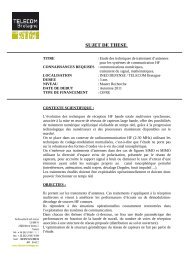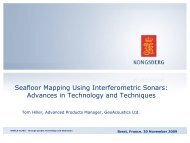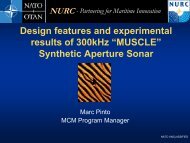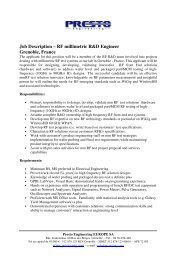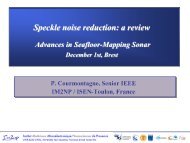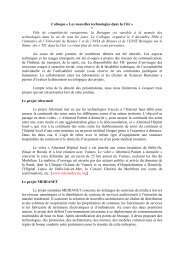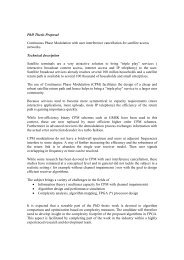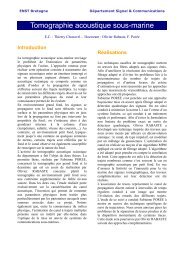Approche a-contrario pour la détection de changements sous ...
Approche a-contrario pour la détection de changements sous ...
Approche a-contrario pour la détection de changements sous ...
You also want an ePaper? Increase the reach of your titles
YUMPU automatically turns print PDFs into web optimized ePapers that Google loves.
Sommaire<br />
Modélisation a-<strong>contrario</strong><br />
Détection <strong>de</strong> <strong>changements</strong><br />
Conclusion<br />
Introduction<br />
Formalisme général<br />
Origine<br />
Modélisation introduite en Vision par [Desolneux, 2000],<br />
Inspirée <strong>de</strong> <strong>la</strong> perception humaine <strong>de</strong>s lois <strong>de</strong> Gestalt<br />
(alignement, convexité, parallélisme, etc).<br />
Principe <strong>de</strong> Helmholtz<br />
On perçoit une structure dans un groupe d’objets lorsque leur<br />
configuration, selon une ou plusieurs lois <strong>de</strong> Gestalt, n’aurait pas pu<br />
se produire dans une situation aléatoire.<br />
Amandine Robin<br />
<strong>Approche</strong> a-<strong>contrario</strong> <strong>pour</strong> <strong>la</strong> détection <strong>de</strong> <strong>changements</strong> <strong>sous</strong>-pixeliques e




